
Grace Brewster Hopper was an American computer scientist, mathematician, and United States Navy rear admiral. One of the first programmers of the Harvard Mark I computer, she was a pioneer of computer programming who invented one of the first linkers. Hopper was the first to devise the theory of machine-independent programming languages, and the FLOW-MATIC programming language she created using this theory was later extended to create COBOL, an early high-level programming language still in use today.
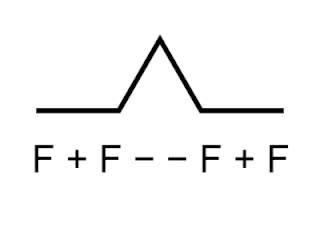
Logo is an educational programming language, designed in 1967 by Wally Feurzeig, Seymour Papert, and Cynthia Solomon. Logo is not an acronym: the name was coined by Feurzeig while he was at Bolt, Beranek and Newman, and derives from the Greek logos, meaning word or thought.
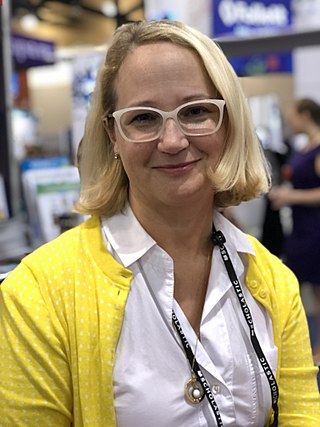
Jennifer L. Holm is an American children's writer, and recipient of three Newbery Honors and the Eisner Award.
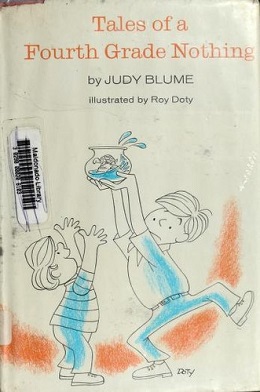
Tales of a Fourth Grade Nothing is a children's novel written by American author Judy Blume and published in 1972. It is the first in the Fudge series and was followed by Otherwise Known as Sheila the Great, Superfudge, Fudge-a-Mania, and Double Fudge (2002). Although Otherwise Known as Sheila the Great features many of the same characters as the series, it does not fit exactly in the continuity of it because, as a spin-off, it only focuses on Peter's classmate, Sheila Tubman.
John Stocker is a Canadian voice actor. His career in voice acting began in the 1970s.

The MoonScoop Group was a French animation and production company that created and published animated television series. Its corporate headquarters were located in Paris, France, along with offices in the United Kingdom and the United States. It was established in 2003. It is most famously known for Code Lyoko and its open-ended sequel series, Code Lyoko: Evolution.

First Second Books is an American publisher of graphic novels. An imprint of Roaring Brook Press, part of Holtzbrinck Publishers, First Second publishes fiction, biographies, personal memoirs, history, visual essays, and comics journalism. It also publishes graphic non-fiction for young readers, including the Science Comics and History Comics collections, and for adults, including the World Citizen Comics, a line of civics graphic books, and biographical works such as The Accidental Czar.

Lark Pien is an American cartoonist who has created the minicomics Stories from the Ward, Mr. Boombha, and Long Tail Kitty, the last of which won her the Friends of Lulu Kimberly Yale Award for Best New Talent in 2004.

Sonny Liew is a Malaysia-born comic artist/illustrator based in Singapore. He is best known for The Art of Charlie Chan Hock Chye (2015), the first graphic novel to win the Singapore Literature Prize for fiction.
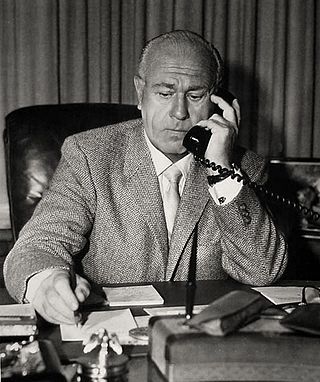
Sol C. Siegel was an American film producer. Two of the numerous films he produced, A Letter to Three Wives (1949) and Three Coins in the Fountain (1954), were nominated for the Academy Award for Best Picture.

Gene Luen Yang is an American cartoonist. He is a frequent lecturer on the subjects of graphic novels and comics, at comic book conventions and universities, schools, and libraries. In addition, he was the Director of Information Services and taught computer science at Bishop O'Dowd High School in Oakland, California. In 2012, Yang joined the faculty at Hamline University, as a part of the Low-Residency Master of Fine Arts in Writing for Children and Young Adults (MFAC) program. In 2016, the U.S. Library of Congress named him Ambassador for Young People's Literature. That year he became the third graphic novelist, alongside Lauren Redniss, to receive a MacArthur Fellowship.
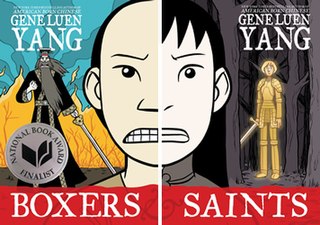
Boxers and Saints are two companion graphic novel volumes written and illustrated by Gene Luen Yang, and colored by Lark Pien. The publisher First Second Books released them on September 10, 2013. Together the two volumes have around 500 pages.

The Green Turtle is a superhero originally published by Rural Home Publications. He first appeared in Blazing Comics (1944), and was created by Chinese-American cartoonist Chu F. Hing. While the original run of the character lasted only five issues, the Green Turtle is notable for three factors. First, during WWII, the stories represented the Chinese in U.S. popular media as heroic partners fighting the Axis. One issue begins with the banner 美國及中華民國, and features a U.S. general joining Chinese guerrillas in battle. During the war, U.S. depictions of the Pacific theatre were typically racialized; the "Yellow Peril" stereotypes applied to the Japanese were originally anti-Chinese and portrayed Asians as racial enemies of Western civilization. Second, the character is often identified as the first Asian-American comic book hero. These factors inspired a contemporary graphic novel on the Green Turtle, Shadow Hero, by Gene Luen Yang, whose American Born Chinese was the first work in a comics format to be nominated for the National Book Award.

MBC 3 is a free-to-air children's channel launched on 8 December 2004, and appeals to children under the age of 15. All foreign television animated programs have been dubbed into Arabic. The channel also produces its own original programmes. It was owned by the Middle Eastern company MBC Group.

Superman Smashes the Klan is a three-part superhero limited series comic book written by Gene Luen Yang with art by Gurihiru and published by DC Comics. It is a Superman story which is loosely based on the 1946 The Adventures of Superman radio show's story-arc "Clan of the Fiery Cross".

Kong Kenan is a superhero appearing in comic books published by DC Comics and is known as the Super-Man of China. The character, who first appeared in New Super-Man # 1, was created by Gene Luen Yang and Viktor Bogdanovic.

Dragon Hoops is a nonfiction graphic novel by Gene Luen Yang, illustrated by Gene Luen Yang and Lark Pien, and published by March 17, 2020, by First Second.

American Born Chinese is an American action comedy television series created by Kelvin Yu for Disney+. It follows tenth-grader Jin Wang, who is struggling to fit in with his peers. When he is tasked with showing new exchange student Wei-Chen around, he is unexpectedly thrust into a battle between mythical Chinese gods, including Sun Wukong and Guanyin. The series is based on the 2006 graphic novel American Born Chinese by Gene Luen Yang, who drew inspiration from his own adolescent years in the 1990s, incorporating elements from Chinese folk tales and mysticism found in the classic Chinese novel Journey to the West.
















